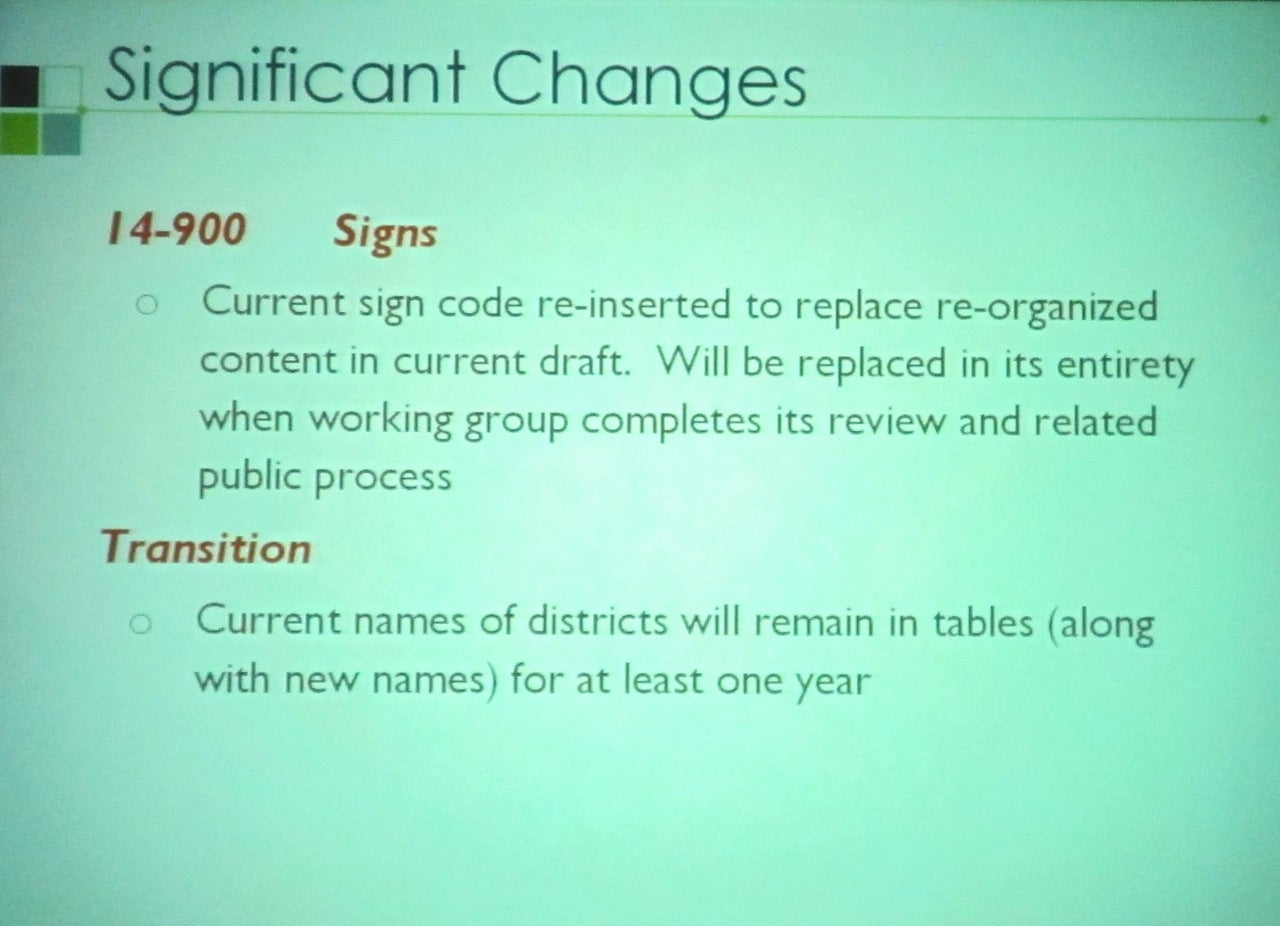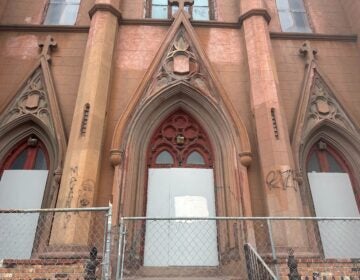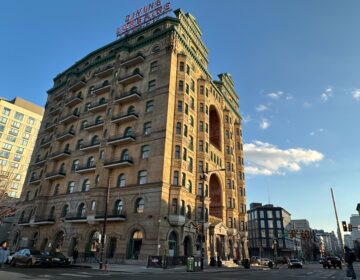Springtime for Spring Garden Street (part 2)

Photo: Delaware Ave, view south (early 1929, with new Benjamin Franklin Bridge, not yet open)
Part 2 of a 2-part series. (Click here for Part 1).
From the Delaware River to the Schuylkill, Spring Garden Street is many things. Colorful neighborhoods bump up against drab open spaces. Blocks of shady strolling end in sun-blanched nothingness. Areas are by turns collegiate, commercial, residential and industrial. It has little-known cultural spots such as the Edgar Alan Poe National Historic Site and the German Society of Pennsylvania.
It is home to Philadelphia Community College and the Masterman public magnet high school. It has mass transit hubs at 2nd Street and Broad Street, and it completely crosses the city, east-to-west, at what is now widely considered to be Center City’s northern border.
But its greatest asset in terms of potential is likely a matter of dimension. Unlike most streets in Philadelphia, Spring Garden is wide – very wide. Wide enough to accommodate a portion of the East Coast Greenway.
“The vision for the Spring Garden Street connector would significantly modify the form of the transportation facility – potentially,” said Patrick Starr, senior vice president of the Pennsylvania Environmental Council. “We hope that it will be a really groundbreaking facility – a truly multi-purpose path that would distinguish it from anything else we have.”
The East Coast Greenway is a 21st century Route 1, seeking to connect, by trails both existing and yet to come, Canada and Key West through every major city on the Eastern seaboard. Though it is well underway, it will takes years, possibly more than a decade, to complete.
More than 21 percent of the route is already on what organizers describe as “safe, traffic-free paths.” Some of those paths are already existing here in the city, with the recently completed Schuylkill River Trail perhaps the most celebrated.
The 3,000-mile trail would come right through the heart of Philadelphia, bringing people from the Delaware River, via Spring Garden Street, to the Schuylkill River.
“This is preliminary,” Starr stressed. “It will need much further study before the report [is made public]. But it would be a dedicated two-way bicycle facility unlike what we currently have in the city of Philadelphia.”
That includes dedicated bike lanes that will remove one full lane of car traffic on Pine Street and Spruce Street after Labor Day. The Center City experiment on the one-way streets will be river-to-river, converting two lanes of automobile traffic and one lane of parking to lanes with one lane for cars, one for parking and one for bicycle traffic only.
A happy median?
In this manner of speaking, the Spring Garden Street portion of the trail is already prepared, possessing existing designated bike lanes from river to river. But being a street connection to the Greenway is much different from being part of the Greenway itself.
“Obviously the best thing you can have is a network that works together – it compounds the usage, and that’s very important,” said Starr. “The final design would not be a bike lane, though. It would be something off-road, on a separated trail. It would be a complete reconfiguration of the street.”
Because Spring Garden has very wide sidewalks as well as a wide street, options are open. The path could be on either side of the street, or straight down the middle. In the latter case, it would be much more than just a happy median. It would be a bona fide park that splits eastbound and westbound vehicular traffic. The street is so wide that effects on traffic and parking could be minimal, while at the same time attracting much-needed economic development to blocks that are barren, or dangerous at night.
“Unlike many Philadelphia streets, you have a good bit of right-of-way to work with,” Starr said. “And there’s an existing median to work with. We don’t know yet. Cross-sections are not prepared yet.”
The process could well come in phases. One of the country’s most ambitious bike projects is along 9th Avenue in Manhattan, where the bike lanes have been separated from vehicles by the parking lane. They now run the width of a regular lane, with the crucial safety difference being that the lane is between the sidewalk and the row of parking. The Chelsea neighborhood 9th Avenue “cycle track” is set off by temporary, reflective posts, about three feet high, that complement the wide street markings.
The New York plan “also includes traffic signals for bicyclists, greenery-filled refuge areas for pedestrians, a new curbside parking plan, and signalized left-turn lanes for motor vehicles,” according to StreetsBlog.org.
Recently, in Vancouver, the busy Burrard Bridge had one of its southbound lanes closed for cyclists for a three-month trial, which was highly controversial with motorists, even in that enlightened city. Two weeks in, reports are mostly positive.
The hard part
The actual planning feasibility study for the Spring Garden Street path is done.
The design phase requires another level of funding of an unknown amount. No target date for commencement or completion has been set, official or otherwise. Starr said it would be a “very significant, costly and substantial re-engineering” of Spring Garden Street.
“What they’re trying to do is come up with some way of connecting our projects here on the Delaware with the Schuylkill River Banks,” said Paul Lonie, capital program director of the Delaware River City Corp. “They are exploring whether it’s best to go through Spring Garden, or who knows, maybe the Navy Yard.”
Lonie’s organization, which recently lost a major corporate sponsor, forcing a painful staff cut, is organizing the creation of the North Delaware Riverfront Greenway, an eight-mile East Coast Greenway link. It would transform many of the abandoned, former industrial properties along the Delaware, and seek alliances with current owners such as Conrail – companies that are still active but have left large portions of their riverfront properties to rot.
“There are a lot of people interested in Spring Garden Street,” said Jeff Goldstein, an architect and a principal with DIGSAU, a firm working with the Northern Liberties Neighbors Association to green and beautify the stretch of Spring Garden from Delaware Avenue to 2nd Street. “The Water Department has identified it as a ‘green street.’”
Goldstein was referring to the department’s Green Streets pilot project, where Northern Liberties is one of three model neighborhoods – an early testing phase of what has emerged into the city’s overall “Greenworks” program within the still-new Sustainability Department. The Green Streets project uses tools such as street trees, landscaping, water absorbing “vegetative swales,” rain barrels and other methods of energy conservation and storm water management. (See part 1 of this series, about this project, published Tuesday [Aug. 4, 2009]: http://www.planphilly.com/node/9489.)
That would go hand-in-garden glove with the vision of Spring Garden as a new sort of garden for bicyclists and pedestrians. Goldstein said he was aware of three different schemes that the PEC is considering for the length of Spring Garden Street, river to river.
“The most ambitious scheme puts two bike lanes in the center median the whole way,” he said. “From what I’ve heard there is a lot of enthusiasm behind the drawings that they’ve been showing so far. It certainly involves a lot of traffic management.”
“We’ve posited what’s possible, done some basic groundwork on dimensions, looking at volumes, and some ideas that could work, but until you get down to the design phase, you can’t really know that total costs will be or how long it will take,” Starr said. “The East Coast Greenway Alliance and us are using the [current] study to promote the connector to state officials and the community. It’s a way to bring people together.”
Just like the Appalachian Trail got built in the New Deal, a Spring Garden Greenway connector is something that’s low-cost and long-lasting, creates jobs and makes sense, said Paul Levy, executive director of the Center City District and the Central Philadelphia Development Corp. From a jurisdictional standpoint, “it’s an idea that we would support, but not something we would put resources into,” he added.
“Spring Garden and Washington Avenue ought to be really generously landscaped boulevards,” said Levy, who added that he tends to think of such bikeways and greenways in highway terms, with outer loops and inner core commuter drives. Spruce and Pine will soon serve as the latter for bicyclists.
Washington Avenue to the south – which is actually wider than Spring Garden – would make an excellent river-to-river greenway connector as well, Levy said, leading on its western end, as it does, straight into the Grays Ferry bridge and University Avenue, across the Schuylkill.
Pieces of the puzzle
In New Jersey, the Greenway runs for 78 miles from New York to Morrisville, much of it rural and suburban. But it also passes through Jersey City, Newark, New Brunswick, Princeton and Trenton. It includes the 35-mile D&R Canal State Park from New Brunswick to Trenton. About half the trail is still on roadways, but another 16 percent is slated for trail development within the next several years. (For a terrific, easy-to-use and detailed multi-use trail guide of New Jersey’s Greenway, download the 38-page PDF file here: http://www.greenway.org/pdf/nj_guide.pdf.)
In Delaware, the trail is comprised of 40 miles, with only 16 miles of completed trail. The Northern Delaware Greenway leads into downtown Wilmington, ending at the Christina Riverwalk. The trail is mostly roads after that, but does include the New Castle Riverfront Greenway and further on, at Newark, the James F. Hall Trail which winds through the southern parts of the state before hitting Maryland.
About 20 percent of the permanent Greenway route through Pennsylvania is currently complete, according to the Greenway’s Web site, with another 30 to 40 percent in development. The site says projections suggest that by the end of 2010, more than 40 miles of East Coast Greenway in Pennsylvania will be constructed.
58th Street
Spring Garden Street would likely not be the first major urban street to be a part of the East Coast Greenway. In October 2008, the PEC received $83,000 to finalize design elements for the 58th Street Connector – connecting the Schuylkill River with Cobbs Creek. At about 1.5-mile, it will connect the Schuylkill River, the Schuylkill River Trail extension and Bartram’s Garden to Cobbs Creek and the Cobbs Creek Trail, through Southwest Philadelphia. The Greenway would then proceed south toward Wilmington, Del.
“When complete, this greenway will provide a new landscaped boulevard access route to an underutilized stretch of the Schuylkill River waterfront and to Bartram’s Garden,” said Spencer Finch, Director of Sustainable Communities for PEC, in a statement when the funding was awarded by the William Penn Foundation, through the Delaware Valley Regional Planning Commission.
The PEC was among 13 organizations in the Philadelphia region to receive funding from the “Take Me to the River” grant program, which awarded $1 million to riverfront capital projects.
Contact the reporter at thomaswalsh1@gmail.com.
ON THE WEB:
Pennsylvania Environment Council http://www.pecpa.org
East Coast Greenway: http://www.greenway.org/
Delaware River City Coalition: http://www.drcc-phila.org
Delaware River Greenway Partnership: http://www.delrivgreenway.org
Bicycle Coalition of Greater Philadelphia: http://www.bicyclecoalition.org
Delaware Valley Regional Planning Commission: http://www.dvrpc.org
Fairmount Parks Commission: http://www.fairmountpark.org
Keystone Trails Association: http://www.kta-hike.org
Schuylkill River Development Corporation: http://www.schuylkillbanks.org
WHYY is your source for fact-based, in-depth journalism and information. As a nonprofit organization, we rely on financial support from readers like you. Please give today.





